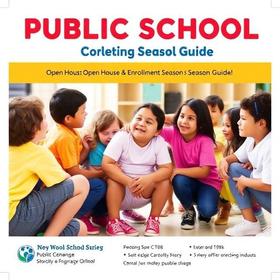Many education and business experts agree that Chinese is the language du jour if the United States hopes to compete in a global marketplace that is significantly dominated by the PRC. However, the number of students learning this language in school isn't adding up to what some perceive as the demand for more Mandarin-speaking Americans. To help create a more diverse climate, Chinese immersion charter schools are opening across the country, with hopes to teach children one of the most difficult languages at a very young age. We'll take a look at some of these charter schools, including those already in operation and those hoping to launch in the not-so-distant future. Here is an overview of this type of school.
Why Chinese?
It is no secret that China has one of the most robust economies across the globe today. To compete with this country, most agree that we need to better understand them. According to an op-ed piece in Newsweek, training a culturally-savvy workforce is something that other countries understand much better than the United States does. For example, Chinese is the second-most-popular language in Japan and South Korea. In the United States, Chinese is down in the fifth spot for foreign language instruction.
Multi-lingual students are not restricted to Asia, either. In Europe, most children learn a second, third or fourth language while they are still in elementary school. Students in the United States are lucky to get instruction in a second language while they are still in the primary grades. According to numbers from the Center for Applied Linguistics, only 15% of elementary schools and 58% of middle schools offer any type of foreign language instruction. While Chinese immersion charter schools are gaining speed in this country, they still have a long way to go before families can enjoy this option from coast to coast.
Learning Chinese in the Capital
In Washington DC, the first public school to offer Chinese language immersion is now in session. According to the school website, Yu Ying is modeled after a groundbreaking girls' school that was founded in Beijing in 1911. The charter for Yu Ying was approved in 2008, and the school currently accepts applications for students from PreK4 to second grade. The school combines Chinese immersion with the International Baccalaureate Program to provide the highest quality of education to every student who enrolls at Yu Ying.
Pioneer Valley Offers Chinese in Massachusetts
In Hadley, Massachusetts, the Pioneer Valley Chinese Immersion Charter School is helping students achieve a more culturally diverse education. This charter school offers instruction for K-8 with rigorous study in line with the state and federal guidelines for public education today. According to the school's website, 75% of daily instruction in early grades is given in Chinese, which tapers off in the later school years. This approach has been shown to be a highly effective way of creating bilingual students.
Bringing Chinese Immersion to the Bay Area
A recent article in the Wall Street Journal reports on a group of parents in the Bay area that are hoping to get the first Chinese immersion charter school off the ground in their area this fall. The Yu Ming Charter School is currently on the hunt for a principal and a building to begin classes during the next academic year. The school was the brainchild of El Cerrito doctor Michael Jugo, who had a strong desire to have his children learn Mandarin in school – an opportunity Jugo never had. The idea spiraled as more parents came onboard the project, and the charter request received unanimous approval from Alameda County last November. This video examines the dual immersion schools in California.
Waiting for Approval in Boston
The Massachusetts Board of Elementary and Secondary Education recently heard public comments for the proposed Boston Chinese Immersion Charter School, according to a report at Sampan. This charter school would address the needs of families throughout the Boston area that wanted to expose their children to the Chinese language and culture from a very young age. Some adopted their children from China, and they want a way to keep their children true to their heritage. Others simply desire a multi-cultural experience for their kids that would help them compete in a global marketplace. A decision on the school's charter is expected in February. This video updates the current situation in Boston.
Chinese immersion charter schools are becoming more common, but they still have a long way to go if we are to set our students up for competition in a global climate. Although Chinese is one of the hardest languages to learn, exposing children to it at a young age will make it easier to learn. Now that these schools are boasting some academic success, perhaps Chinese immersion will truly become the wave of the future in this country.
Questions? Contact us on Facebook. @publicschoolreview














